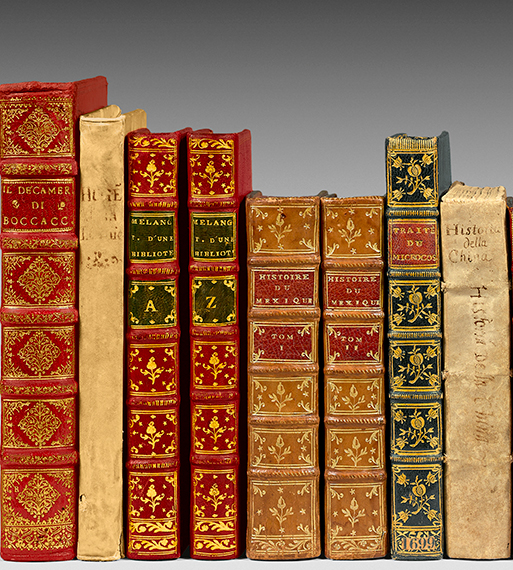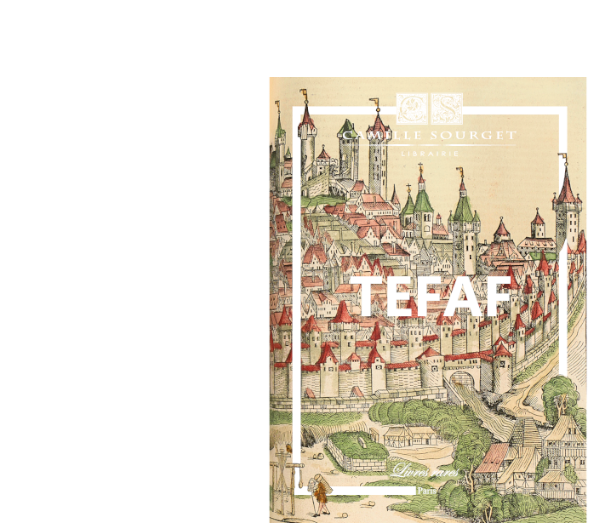Original edition of the first book printed in Montefiascone,
which includes the first complete history of the basilica St. Francis of Assisi.
The great illustrated book on the city of Assisi.
Montefiascone, 1704.
Angeli, Francesco Maria. Collis Paradisi Amoenitas, sev sacri conventus Assisiensis historiae libri II. Opus posthumum patris magistri Francisci Mariae Angeli a Rivotorto Ord. Min. S. Francisci Conventualium. In lucem editum Opera, & studio fratris Francisci Antonii Felicis Carosi de Monte Leone Provinciae Sancti Francisci eiusdem Ordinis Sacerdotis. Sanctissimo D. N. Clementi XI. Pont. Opt. Max.
Montefiascone, Typographia Seminarii, 1704.
In-4, (10) pp. including 1 engraved frontispiece, 104 pp., 78, (2), 16, 12 plates including 11 folding and 1 full-page. Full brown calf, gilt dentelle framing the boards, richly decorated smooth spine, marbled endpapers and pastedowns, red edges. Binding of the 18th century.
283 x 190 mm.
First edition of the first book printed in Montefiascone.
Graesse, Treasury of rare and precious books, 127; Platner p. 50. Not in Lozzi.
“Rare.” (Catalog of the library of S.E.D. Paolo Borgese).
“Curious book, especially for the engravings with which it is adorned” (Catalog from the library of Abbot Sebastien Donati).
“‘They say that the body of St. Francis is buried there in a place which they show, but the truth is that no one knows the exact spot, not even those in the monastery, except the Pope, one cardinal, and a brother of the monastery, to whom the Pope confides the secret.’ Thus the Spanish pilgrim Pero Tafur summarized his visit to the tomb of St. Francis at Assisi in the spring of 1436…
In the sixteenth century, widespread belief in a lost tomb below the Church crystallized around the concept of a third, hidden church. Giorgio Vasari, in the 1550 edition of his famous ‘Lives’, discussed the Basilica of S. Francesco in terms of a tripartite structure: ‘Maestro Iacopo Tedesco designed a beautiful church and convent, built according to the model of three orders: one to act as a crypt, the others as two churches’.
In the early years of the seventeenth century, a pilgrim’s pamphlet printed in Assisi graphically captured these beliefs in a series of engravings, while a groundplan and view of the ‘third church’ were included in the first comprehensive history of the Basilica, Francesco Maria Angeli’s ‘Collis Paradisi’, published posthumously in 1704”.
(“The tomb of St. Francis in history, legend and art”)
The superb illustration includes 1 engraved frontispiece adorned with the pope’s coat of arms and 12 copper engravings by Francesco de Providonis, 11 of which are folding and 1 full-page.
A beautiful copy preserved in its period binding of this important illustrated work on the history and art of the city of Assisi and Franciscan sites.

